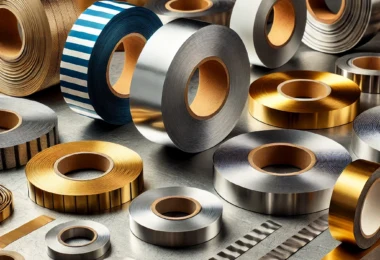When we talk about healthy hair, we mean the look and feel. How does your hair look? Is your hair shiny, for example? How does your hair feel? Is the texture rough or smooth?
Here’s my Healthy Hair Checklist. You can use it to understand how healthy hair looks and feels.
How to Get Healthy Hair – Your Checklist
Hair feels smooth and slippery in texture. Take a strand of hair and gently hold it at the roots (this avoids any tension at your roots). With your other hand, slide your thumb and forefinger down the strand of hair. If it’s healthy, it should feel silky smooth without split ends.
Shiny hair is healthy hair. When hair shines, it’s because the cuticle is smooth (see above). The cuticle, the hair’s outer layer, comprises tiny scales. When your hair is dry, the scales lift. When your hair is well hydrated, the scales lay flat, and the smooth surface of the cuticle reflects light, making it shiny.
Natural body and movement. When it’s well-hydrated, the individual strands are thicker. That gives your hair a feeling of fullness.
Hair can cope with humidity. When hair has normal porosity, it retains moisture. That means it’s less prone to becoming frizzy hair in humid or damp environments.
What do you see when you look at your Hair?
Use my Healthy Hair Checklist to understand your hair’s condition.
If you want healthy hair, there’s plenty you can do. Changing your routine to choosing the right products for your hair type can make a difference.
Adding a deep conditioner for dry hair to your weekly hair care routine can make the difference.
Whenever I talk about getting healthy hair or promoting hair growth, I start with the scalp.
How do you keep your Scalp Healthy?
The scalp is a sensitive area. For some, it’s more sensitive than others. The scalp is like a delicate ecosystem, and taking good care of it will give you the best foundation for healthy hair growth.
How to Get Healthy Hair – My 6 Dos and Don’ts for good scalp health.
Do keep your scalp clean.
It’s vital to get rid of dead skin cells and other dirt that can build up. For some, that means washing the hair 2 to 3 times a week with a gentle shampoo. For others, it may be once a week and for those with an excessively oily scalp this can mean every day. The important thing is that you take note of how your scalp feels and adjust accordingly.
Don’t overstimulate the scalp.
You’ve probably heard of sebum, the oil that the scalp produces to add moisture to the hair. Whilst, sebum is vital for moisture, if you overwork the scalp by vigorous scrubbing when you wash your hair, it’s possible to overstimulate the sebaceous glands that produce the sebum. That can lead to an oily scalp. The oily scalp attracts more dirt. Plus, it’s harder to keep your hair and scalp clean.
Do gently massage your scalp.
Good scalp circulation is good for hair growth. A great time to massage your scalp to improve circulation is when you wash your hair. Avoid vigorous scrubbing; firm but gentle pressure with circular movements as you wash is ideal.
Do work up the shampoo, in between your palms, before applying to your scalp.
That prevents the over-application of shampoo in one area of the scalp. If you squeeze shampoo into your hand and place it directly on the top of your head, it’s not uncommon to get product build-up in that area. Work it up into a lather before applying for an even spread.
Do eat your greens.
Greens such as spinach contain Vitamins A & C. Vitamin C helps the body absorb iron for healthy hair growth. Vitamin A helps the follicles produce sebum for a hydrated scalp and hair.
Discover the foods that are good for healthy hair growth in my blog, Choose the Best Food for Hair Growth.
Don’t overheat your scalp.
Hot water can dehydrate the scalp. One of the most common problems for scalp health is a dry scalp. A dry, itchy scalp is not only uncomfortable, but the build-up of flakes and sebum can also combine to clog up the follicles and prevent hair growth.
Wash your hair in lukewarm water and avoid getting too much heat on the scalp from heated styling appliances. Turn down the heat on the hairdryer and use short blasts of heat when drying the hair.
Discover more expert tips and advice on maintaining a healthy scalp on my blog.
Hair Blog: How to Improve Scalp Health Naturally
Healthy Hair Tips: Salon Know How
Getting the basics right with good scalp health is vital to promoting healthy hair growth. Follow my healthy hair tips to get your hair in the best shape.
Good hair care starts with a routine.
Just as our bodies respond to a routine of exercise, the hair responds to the routine of cleansing, conditioning and moisturising deep conditioner treatments. There are two priorities for washing your hair; keeping your scalp clean and free of build-up and adding moisture to your hair.
I know there’s lots of advice about not washing your hair too often. I don’t agree. If you don’t keep your scalp clean, it can become clogged with oil and dirt. So if you want to promote healthy hair growth, keep your scalp clean.
Choose a gentle shampoo developed for your hair type and always condition the ends and mid-lengths of the hair.
I recommend washing hair 2 to 3 times a week. If you have afro-textured hair, once a week or every two weeks is fine. It really depends on your personal routine.
For those with fine hair and oily scalps, you may want to wash your hair every day.
Take some time to work out your routine. Use my checklist for healthy hair as a guide to how your hair is doing and make adjustments to see how your hair responds to the changes you make.
Our hair is what we eat.
As I mentioned above, what we eat does affect our hair growth. I take a holistic approach to hair care. Diet makes a difference to the health of our scalp and the strength of our hair.
Iron for strong, healthy hair
Vitamin C helps your body absorb iron and build collagen
Vitamin A for sebum production
Magnesium for a healthy follicle
Vitamin E – antioxidant for scalp health
Fatty acids build cells
B vitamins to support healthy hair growth
Zinc to support the sebaceous glands
Protein to prevent hair from becoming dry and brittle
I don’t advocate taking supplements unless you have consulted a professional. However, I do advocate a healthy, balanced diet for healthy hair growth.
You can find out more in my blog about the best foods for healthy hair growth.
Healthy Hair: Rehydrate your Hair
Because hair is exposed to the elements every day, there’s lots of potential for damaged hair, breakage and moisture loss: from the sun to wind and rain to heating and air conditioning. They all conspire to make hair dry. As a result, hair is more susceptible to breakage.
Similarly, hair styling adds to the load our hair endures. We brush, comb, over-dry our hair, and apply heat with straighteners. And that’s not all. We use chemical treatments to open the cuticle when colouring our hair. As a result, the hair becomes even drier.
It’s no wonder hair needs to be replenished.
Choose the right product for your hair type.
If you feel your products are not working for you, I recommend looking at your routine first. So, for example, are you washing and conditioning your hair enough? Are you over-drying your hair? Make some adjustments to see if that helps. If the problem persists, it might be time to look for different products.
Look at your hair, think about the texture and choose products targeted to your hair needs. It may sound obvious, but it’s something many of us get wrong. If a product makes your hair flat, choose a product that will add volume. If your hair feels dry, choose a dry hair treatment.
Avoid over-drying the hair.
We’ve talked about the drying effects of styling hair, and the truth is that most of us overdry our hair. If you are not professionally trained, it’s easy to do. When it comes to styling hair, there are two things to watch out for; over-drying and overworking the hair.
Avoid overdrying the hair by choosing a lower setting on the hairdryer. However, it’s vital to notice what’s happening to your hair in the drying process. If the hair feels dry and no longer damp to touch, it’s time to stop.
It’s the same with styling. Once you’ve got the hair in place, let it settle. Don’t keep working on it.
Choose styling products that add moisture to the hair.
Choose styling products that add moisture to your hair. As we’ve discussed, hairstyling has a drying effect on the hair. Choose styling products that are formulated to condition hair to reduce the impact.
If you want to get volume and body in your hair, but don’t want heavy styling products, choose our best volumizer for fine hair, Styling Mist for Natural Hold and Volume.
Styling Mist for Natural Hold and Volume
Brilliant. I don’t usually do reviews but I am so pleased with this. I have fine hair which I am growing into another style. This spray has kept my hair looking tidy and natural.
Hair Volume Product
Handle wet hair with care.
Hair is vulnerable when wet, and consequently, the hair can suffer the most damage after we’ve washed it. Your hair needs gentle handling. That means no vigorous rubbing when your dry your hair. Instead, gently squeeze the water from your hair with your towel.
If you are using a comb at this point, choose a wide-tooth comb. However, avoid tugging at the roots. Start by gently holding on to the mid-lengths of your hair and work from the end upwards. Ideally, your conditioner should have done much of the detangling work, so if you find your hair is very tangled at this point, it might be time to rethink your conditioner.
Get regular trims to avoid split ends.
Despite all our best efforts at hydrating our hair, the ends will become drier over time. Get rid of split ends by getting a regular trim. I recommend trimming every 6 – 8 weeks.
Maintain hair hydration.
The hair comprises multiple layers, but I’ll focus on the cortex (the inner layer) and the cuticle (the outer layer). There are two principal functions of our conditioners and hair mask:
To get moisture into the cortex and help it to retain that moisture.
To smooth the cuticle. It forms a protective seal to hold the moisture held in the cortex.
The result is that hair feels fuller because it has moisture. Plus, it feels smoother in texture. The hair shines because the light is bouncing off the smooth surface. Hair that retains moisture is strong, has more elasticity, and is less prone to breakage. Keeping your hair hydrated will help your hair look and feel healthier.
















